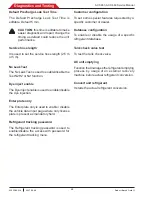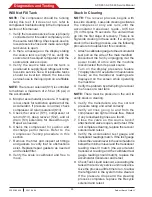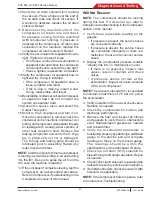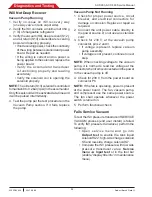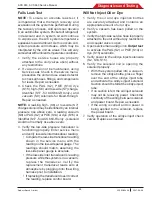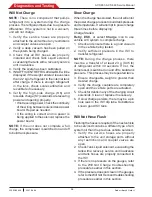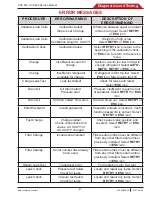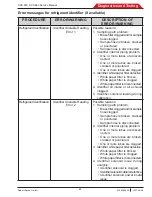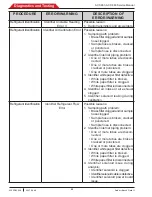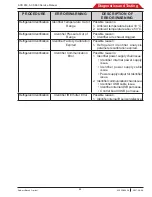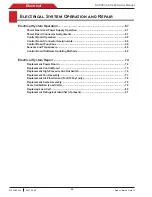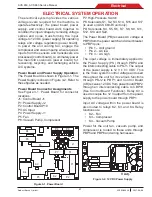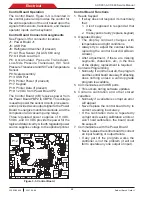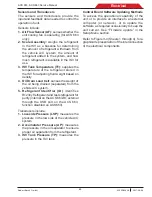
ACS 653, ACS 663 Service Manual
SP00D00624
2021-04-08
Robert Bosch GmbH
59
Diagnostics and Testing
Compressor Troubleshooting
1. Check for proper power source, circuit
breaker, and electrical connectors for
damage or corrosion.
2. Clear service hoses and remove them.
3. Disconnect unit from the power source.
4. Remove the front plastic cover.
5. Connect the unit directly to a known good
power source. Do not use an extension
cord.
6. Check for 230 VAC to the compressor.
• If there is no voltage to the compressor’s
start components, proceed to the next
step.
• If voltage is present at the compressor,
replace the compressor thermal protector
and start relay assembly. If compressor
runs, verify the compressor amp draw is
within specs. If the compressor doesn’t
run and/or is drawing locked rotor amps,
replace the compressor.
CAUTION: If using the output step test to
run compressor, the oil return solenoid must
be open before the compressor is started
.
7. Check for 230 VAC from the power board
on connector P6, pins 1 and 2.
• When checking voltage to the compressor,
it is normal to read a low voltage at the
connector when it’s disconnected and the
power to the compressor is off.
• If voltage is present, check wiring between
the power board and the compressor start
components. Repair as needed.
• If voltage is not present, replace the
power board.
8.
Perform functional check.
Compressor Testing Procedure
1. Disconnect unit from the power source.
2. Open the service rear door.
3. Remove all three lines attached to the
compressor.
4.
Cap off the compressor oil return port.
5. Connect a manifold set to the compressor,
high side to the compressor discharge and
the low side to the suction port. Remove
hose from center port of manifold.
6. Close both valves on the manifold.
7. Close the service rear door.
8.
Connect the unit to the power source.
9. Enter the service menu, scroll to the Output
test and select the Compressor test.
Figure 2-1. Compressor Assembly
ss00649
10. Start the compressor.
11. The first time the compressor is tested,
the gauges may read approximately 7 bar
(100 psi) and 540 mBar (16 in-Hg).
12. Turn off the compressor and release
pressure from manifold.
Testing the Compressor a Second Time
NOTE:
Studies have shown the first test may
give false compressor values due to embedded
refrigerant in the oil.
1. Close the valves on the manifold and start
the compressor.
2. A good compressor will produce 14 bar
(200 psi) discharge and 472 mBar (14 in-Hg)
on the suction side, minimum.
3. Release all pressure and vacuum from the
manifold set, close both valves and repeat
the test a third time to verify readings.
4. If the suction or discharge of the compressor
is under specifications, replace the
compressor.


